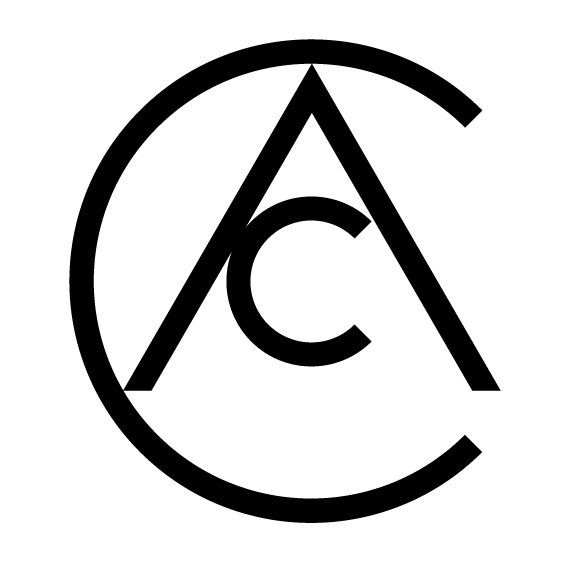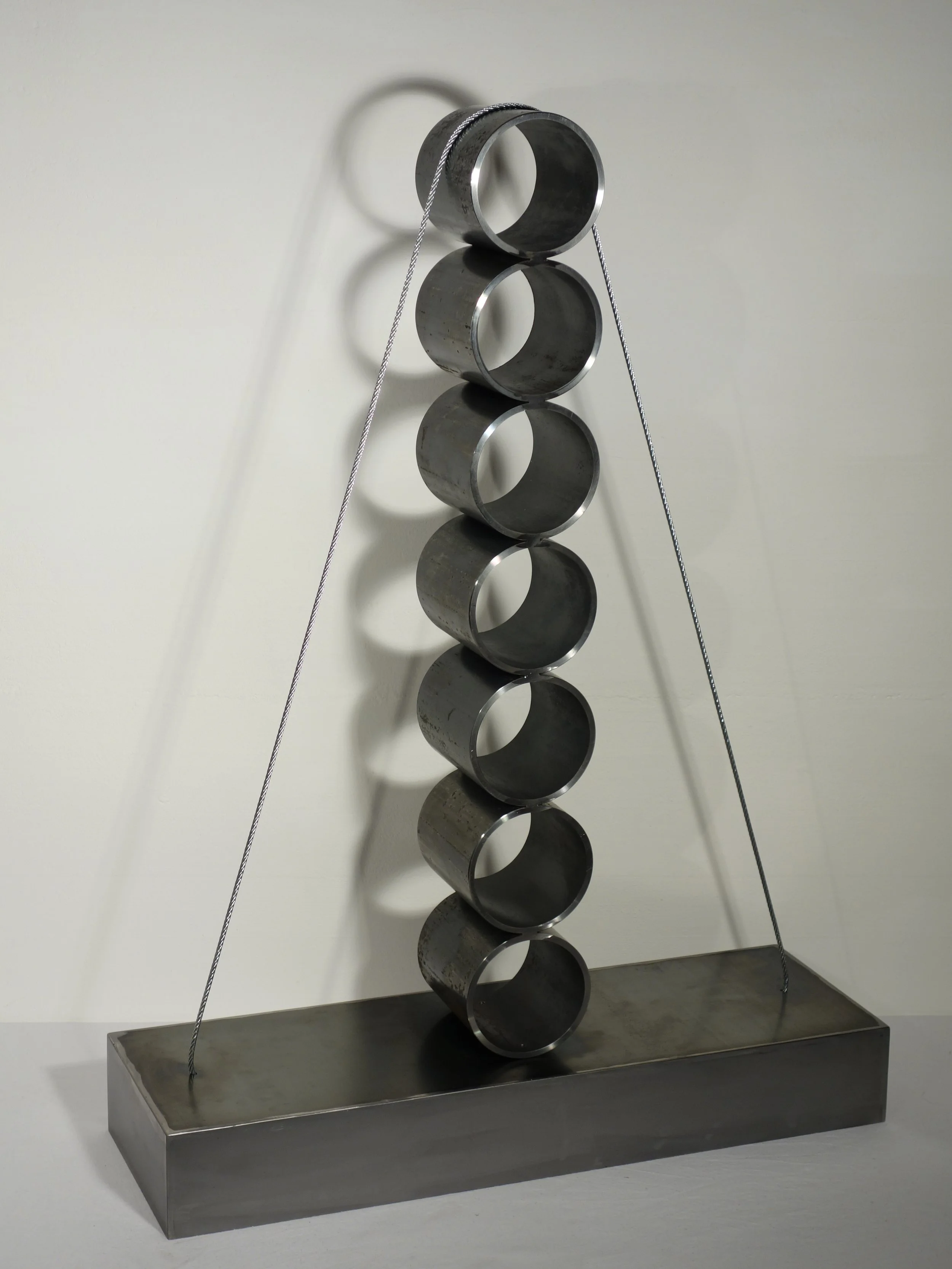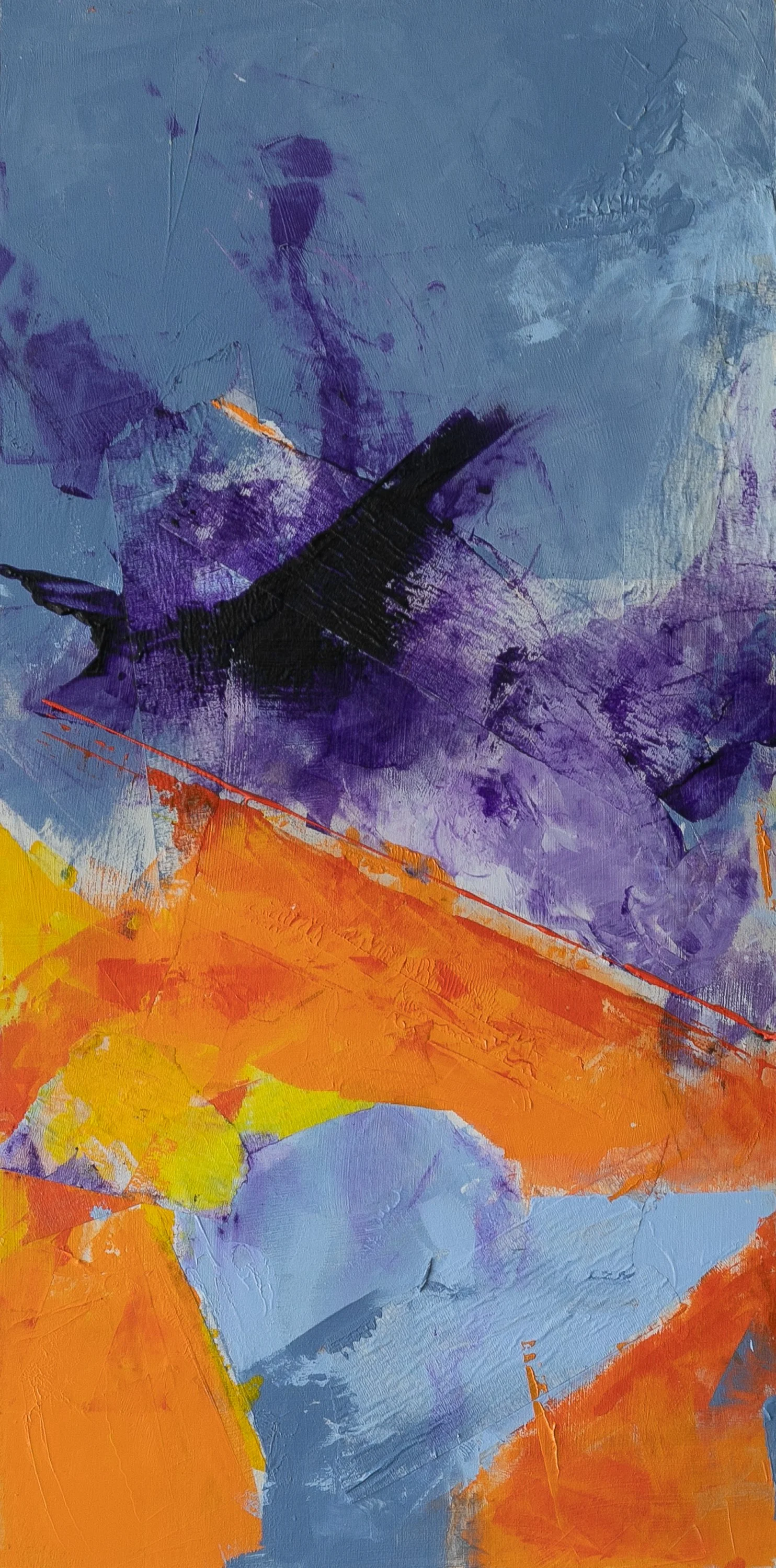Alexander Saner
In a world where art often grapples with the tension between concept and form, Alexander Saner’s work stands as an extraordinary example of balance, clarity, and philosophical depth. A self-taught artist based in Breitenbach, Switzerland, near Basel, Saner has been crafting three-dimensional sculptures since 1993, building an oeuvre that marries minimalist aesthetics with profound conceptual frameworks. His work, notable for its thematic and material rigor, provides a lens through which we can explore the intricate dynamics between the observer, the artwork, and the broader cultural landscape.
Saner’s practice aligns him with the intellectual lineage of modernist sculptors like Constantin Brâncuși, who sought “clarity through simplicity.” Like Brâncuși, Saner eliminates the superfluous to arrive at a sculptural essence, creating works that resonate not only as physical objects but also as vessels of philosophical inquiry. This review seeks to analyze and celebrate Saner’s body of work, with a focus on his distinctive contributions to contemporary art.
At the heart of Alexander Saner’s art lies a profound philosophical inquiry into the nature of existence, perception, and the human condition. His sculptures are not merely aesthetic objects but intellectual provocations, inviting viewers to engage with fundamental questions about the relationship between form, function, and meaning. By prioritizing the interplay between the observer and the observed, Saner transcends traditional boundaries of artistic creation, making his art a vehicle for contemplation and self-reflection.
Saner’s works embody the philosophical principle that simplicity is the highest form of complexity. This is evident in his meticulous reduction of forms to their essential elements, an approach that aligns with the adage often attributed to Antoine de Saint-Exupéry: “Perfection is achieved, not when there is nothing more to add, but when there is nothing left to take away.” By stripping his sculptures of all that is extraneous, Saner creates spaces for profound encounters, where viewers can project their own interpretations and emotions onto the work. This reflects his belief that the dynamic element of a static sculpture is the observer’s mind—a revolutionary perspective that elevates his art beyond the physical realm.
Saner’s philosophy of “No Thing Objects” further deepens the intellectual resonance of his work. In an era defined by overproduction and material excess, his deliberate emphasis on absence, restraint, and essentiality critiques the modern obsession with consumption. His works challenge viewers to reconsider the value of objects in a world saturated with material goods, proposing instead a focus on the intangible: ideas, experiences, and the act of engagement. This makes his art not only visually striking but also intellectually and ethically vital.
Saner’s art is noble and notable because it redefines the role of sculpture in contemporary culture. It is not merely about creating beautiful or imposing objects but about fostering an active dialogue between the artwork and its audience. His pieces stand as timeless reminders of the power of thought and the necessity of simplicity in a chaotic world. By anchoring his practice in deep philosophical concerns, Saner has crafted an artistic legacy that resonates far beyond the confines of the gallery space, making his work both timeless and essential.
Central to Saner’s artistic vision is the concept of the “dynamic-static,” a paradigm that positions the observer as the dynamic element in an otherwise static sculptural environment. This interplay reflects Saner’s belief that “the object depends on the subject,” a statement that invites viewers to actively engage with his works rather than passively consume them.
In pieces like "Tension 7" and "Dynamic Static 66", Saner constructs delicate equilibria of form, inviting the observer’s mental participation. These sculptures are simultaneously precise and precarious, creating a metaphor for the tension inherent in human perception. The viewer becomes the “mental mobile,” their gaze animating the static forms, transforming the sculptures into dynamic loci of thought and reflection.
Saner’s exploration of “No-Thing-Objects” adds another layer of depth to his practice. This concept critiques overproduction and consumerism by celebrating the absence of excess. In works like "No Thing Object No31" and "No Thing Object No50", Saner employs natural materials such as wood, stone, and glass to underscore a return to essentials. These pieces reject grandiosity, emphasizing instead the quiet power of restrained design.
This ethos recalls the Bauhaus principle that “form follows function” but goes further by interrogating the very necessity of objects in a saturated material culture. By embracing simplicity, Saner transcends mere minimalism, creating sculptural “meditations” that resonate with both ecological and existential concerns.
Saner’s "Rebirth" and "Balance" are exemplary of his ability to fuse metaphor with material. In "Rebirth", a gleaming steel sphere rests atop a robust cuboid, evoking themes of renewal and transformation. The reflective surface of the sphere invites viewers to see themselves in the work, positioning the self as both participant and subject in the cyclical process of life and rebirth.
"Balance" explores equilibrium, both physical and philosophical. A delicate interaction between geometrical forms suggests a precarious yet harmonious relationship between opposing forces. These works remind us of Brâncuși’s statement that “simplicity is complexity resolved,” as Saner’s sculptures distill intricate ideas into elegantly resolved forms.
One of Saner’s most intriguing contributions to contemporary art is his concept of “Do It Yourself Art.” This approach advocates the transfer of ideas rather than materials, offering a radical rethinking of authorship and artistic identity. In an age of globalization and digitalization, where the replication of objects often overshadows their originality, Saner’s abdication of signature and identity feels both timely and revolutionary.
This concept parallels movements like Sol LeWitt’s instructional art, where the idea takes precedence over the physical manifestation. However, Saner’s emphasis on the observer’s role as a co-creator adds a participatory dimension that distinguishes his work. By decentralizing authorship, Saner democratizes art, transforming it into a shared, evolving dialogue.
Saner’s "Tension 1" and "Tension 7" series delve into the interplay between strength and fragility. These sculptures, constructed of steel and other resilient materials, are arranged in configurations that suggest both balance and the potential for collapse. The tension is palpable, not only in the physical structure but also in the viewer’s experience of the work.
This fragility echoes contemporary anxieties, from environmental precarity to societal instability. Yet, the works are not pessimistic; instead, they propose resilience through adaptability, inviting viewers to find strength in vulnerability. These sculptures function as visual metaphors for navigating the complexities of modern existence.
In addition to his sculptural practice, Saner explores themes of beauty and contemplation through photography. His series titled "Silence" captures moments of natural stillness, offering a visual respite from the frenetic pace of modern life. These photographs, though distinct from his three-dimensional works, share a philosophical kinship, emphasizing simplicity and presence.
Saner’s photographic practice enriches his sculptural work, providing a meditative counterpoint to the physicality of his objects. Together, these mediums form a holistic artistic practice that invites viewers to consider the interconnectedness of all things.
In the context of contemporary art, Saner’s work occupies a unique position. While his minimalist aesthetic aligns him with movements such as post-minimalism and conceptual art, his focus on the observer’s role and his philosophical engagement with materials set him apart. He is a sculptor not just of forms but of ideas, crafting works that challenge and expand our understanding of art’s purpose.
Saner’s contributions are particularly significant in an era of rapid technological and cultural change. His concepts of “No-Thing-Objects” and “Do-It-Yourself Art” offer critical responses to overproduction and the commodification of creativity. By emphasizing ideas over objects, Saner aligns his practice with broader movements toward sustainability and intellectual engagement.
Alexander Saner’s work resonates with the timeless principles of clarity, simplicity, and balance while addressing the pressing concerns of our contemporary moment. His sculptures are not merely objects to be observed but experiences to be lived, thought through, and felt. Like Brâncuși before him, Saner demonstrates that the greatest complexity lies in the greatest simplicity.
Saner’s art reminds us that, in a world of constant noise, there is power in silence. His works stand as a testament to the enduring relevance of sculpture as a medium for exploring the profound questions of existence. Through his meticulous craftsmanship and philosophical insight, Alexander Saner has secured his place as one of the most important voices in contemporary art, a sculptor of both substance and thought.
By Marta Puig
Editor Contemporary Art Curator Magazine
Tension 7, 36x70x60cm, Steel
Tension 1, 30x92x125cm, Steel
dynamic-static 66, 30x70x240cm, Steel
Static 5, 35x51x37cm, Steel
Cut 66, 90x80x33cm, Steel
Balance,10x15x14cm, Steel
No-thing-object No31, 34x114x14cm, wood, stone, glass
No-thing-object No50, wood, stone, metal
No-thing-object No88, 150x72x13cm, wood, metal
Rebirth, 24x24x43cm,













